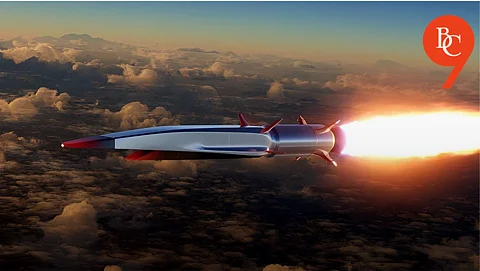

India prepares to test its most advanced indigenously developed hypersonic missile, the ET-LDHCM, under the ambitious Project Vishnu. With a blistering top speed of Mach 8 (nearly 11,000 km/h) and a strike range of 1,500 km, this next-generation missile is set to catapult India into the elite club of nations mastering hypersonic technology.
Codenamed Project Vishnu, this top-secret initiative represents years of cutting-edge research and development by India’s premier defense scientists and engineers. The ET-LDHCM (Extended-Range, Long-Duration Hypersonic Cruise Missile) is the crown jewel of this effort, designed to deliver unmatched speed, precision, and survivability on the modern battlefield.
The missile’s Mach 8 capability means it can travel at eight times the speed of sound, making it nearly impossible for current missile defense systems to intercept. Its 1,500 km range allows it to strike strategic targets deep inside enemy territory, providing India with a formidable deterrent and a powerful tool for rapid response.
Hypersonic missiles are the new frontier in military technology, combining the speed of ballistic missiles with the maneuverability of cruise missiles. They can evade radar detection, outpace interception, and deliver precision strikes making them a game-changer in modern warfare.
With the ET-LDHCM, India joins a select group of nations including the United States, Russia, and China pushing the boundaries of hypersonic weaponry. This technological leap not only enhances India’s national security but also demonstrates its growing prowess in indigenous defense innovation.
Sources close to the Defence Research and Development Organisation (DRDO) confirm that preparations for the maiden test of ET-LDHCM are in the final stages. The missile will undergo rigorous trials to validate its speed, range, guidance, and survivability under real-world conditions.
The upcoming test will be closely watched by global defense analysts, as success would mark a significant leap in India’s strategic capabilities. It would also send a strong message about India’s commitment to self-reliance in critical defense technologies.
